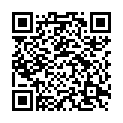|
|
|
| Module code: E2203 |
|
|
2V+2P (4 hours per week) |
|
5 |
| Semester: 2 |
| Mandatory course: yes |
Language of instruction:
German |
Assessment:
Written exam, practical examination with report (lab, ungraded)
[updated 08.01.2020]
|
E2203 (P211-0108, P211-0109) Electrical Engineering and Information Technology, Bachelor, ASPO 01.10.2018
, semester 2, mandatory course, technical
|
60 class hours (= 45 clock hours) over a 15-week period.
The total student study time is 150 hours (equivalent to 5 ECTS credits).
There are therefore 105 hours available for class preparation and follow-up work and exam preparation.
|
Recommended prerequisites (modules):
None.
|
Recommended as prerequisite for:
E2605 Fundamentals of High-Voltage Engineering and Test Engineering
[updated 10.10.2023]
|
Module coordinator:
Prof. Dr. Oliver Scholz |
Lecturer: Prof. Dr. Oliver Scholz
[updated 10.09.2018]
|
Learning outcomes:
After successfully completing this module: - students will have basic knowledge of metrology (e.g. can list the basic principles of the International System of Units (SI), can confidently use and carry out calculations with quantities and their units), - they will be familiar with simple, common methods and procedures for measuring electrical (direct current) quantities, - they will be able to distinguish between known systematic measurement deviations and those of a random nature, - students will be able to calculate the propagation of known systematic (influence analysis) and random (Gaussian error propagation) measurement deviations, - they will be able to name basic measurement methods, list examples and classify them qualitatively, - Students will have mastered the setup for measuring electrical resistance correctly, they will be able to quantify systematic errors in specific cases and make well-founded statements as to when the current correct measurement method is preferable to the voltage correct measurement method. - They will be able to explain and use the metrological terms "accuracy", "trueness" and "precision". - They will be able to divide the characteristic curve of a measuring apparatus or sensor into error categories and determine the respective deviation components, - Students will be able to calculate the maximum permissible measuring deviation of analog and digital measuring instruments on the basis of the scale markings or manufacturer´s specifications, - They will be able to calculate the maximum deviation based on the quantization of a physical quantity using the resolution and enumerate the characteristic errors of a non-ideal quantizer, - They will be familiar with the construction and analysis of a Wheatstone bridge and can determine and correct the measurement deviation based on the finite internal resistance of an ammeter or voltmeter of a deflection bridge, - Students will be familiar with the structure and analysis of a Kelvin bridge and can determine when a Kelvin bridge is most suitable, - They will have mastered the design and analysis of 2, 3 and 4-wire sensing for measuring resistances, and can also calculate the error if, for example, an amplifier has a finite input resistance, - They will be proficient in the basic handling and use of simple measuring instruments in the laboratory (multimeter, power supply unit, oscilloscope, function generator) and can construct simple measuring circuits independently,- Students will be able to use strain gage measurement to easily determine mechanical quantities, - They will be able to perform simple regression analyses from measurement curves using predefined formulas. - Students will be able to draw and label measurement curves and associated coordinate systems in a professional manner,- They will be able to familiarize themselves with new topics within a limited period of time using a range of technical and reference books and then be able to extract and apply the information necessary for solving simple tasks. Students will be able to plan, organize and carry out measurement tasks in small groups.
[updated 08.01.2020]
|
Module content:
Principles of metrology - motivation, SI units, ... Error analysis - systematic errors, random errors, error propagation, ... Measuring instrument technology - analog, digital, ... Measuring basic electrical quantities (with direct current) - voltage, current, resistance, ...
[updated 08.01.2020]
|
Teaching methods/Media:
Slides, lab guides, exercises and videos; all materials can be accessed electronically by students. The module combines lecture and lab components. The lab component consists of 5 compulsory sessions. Experiments will be carried out in groups of two, preparation for the lab sessions will be checked individually. A report must be written for each lab experiment. These reports must be personally presented to the lecturer/supervisor. In the lab sessions, students will carry out various measuring tasks on real objects and devices without demonstration, but according to instructions. A supervisor will be available to assist them, if needed.
[updated 08.01.2020]
|
Recommended or required reading:
Benesch, Thomas: Schlüsselkonzepte zur Statistik: die wichtigsten Methoden, Verteilungen, Tests anschaulich erklärt, Spektrum, 2013, ISBN 978-3827427717 Daehn, Wilfried: Testverfahren in der Mikroelektronik, Springer, 1997 Dankert, Jürgen; Dankert, Helga: Technische Mechanik, Springer Vieweg, 2013, 7. Aufl., ISBN 978-3-8348-1809-6 Hoffmann, Jörg: Taschenbuch der Messtechnik, Hanser, (latest edition) Hoffmann, Karl: Eine Einführung in die Technik des Messens mit Dehnungsmessstreifen, Hottinger Baldwin Messtechnik, 1987 Kohlrausch, Friedrich: Praktische Physik, Teubner, Stuttgart, 1996, 24. Aufl., ISBN 3-519-23001-1 Lerch, Reinhardt: Elektrische Messtechnik, Springer, (latest edition) Mühl, Thomas: Einführung in die elektrische Messtechnik, Teubner, (latest edition) Schrüfer, Elmar: Elektrische Messtechnik, Hanser, (latest edition)
[updated 08.01.2020]
|


